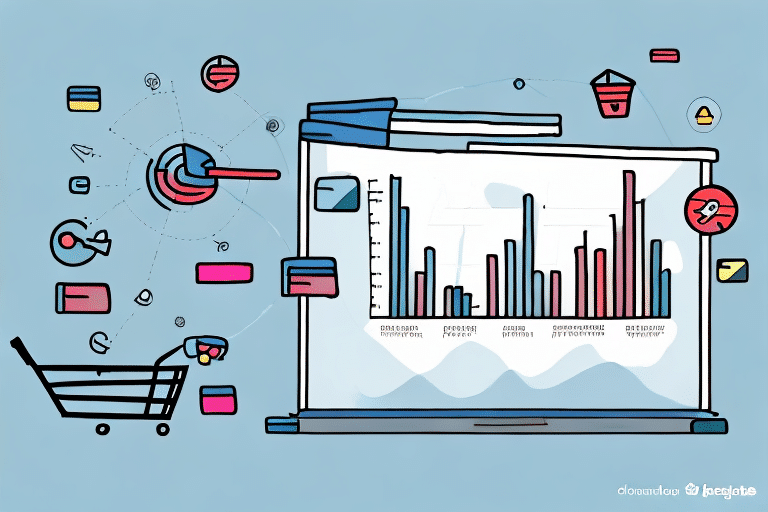Understanding Customer Churn Rate: How to Measure It and Why It Matters for E-Commerce Operations
As e-commerce continues to grow, it's crucial to understand how to measure customer churn rate and its impact on business operations. Customer churn refers to the rate at which customers stop doing business with your company, and it's important for e-commerce businesses to track it because it signals how well they are retaining customers.
What is Customer Churn and Its Importance in E-Commerce
Customer churn is the percentage of customers who stop doing business with your company during a given time period. This could be due to various reasons, such as poor customer service or a lack of product options. For e-commerce businesses, customer churn rate is a critical metric as it impacts revenue and profitability. According to a study by Bain & Company, increasing customer retention rates by 5% can increase profits by 25% to 95%.
One way to reduce customer churn is to improve the overall customer experience. This can be achieved by providing excellent customer service, offering personalized product recommendations, and ensuring that the checkout process is smooth and hassle-free. E-commerce businesses can also use data analytics to identify patterns in customer behavior and preferences, which can help them tailor their offerings to better meet customer needs.
Another important factor in reducing customer churn is maintaining a strong brand reputation. This can be achieved by actively engaging with customers on social media, responding promptly to customer complaints and feedback, and offering incentives for customer loyalty. By building a strong brand reputation, e-commerce businesses can create a loyal customer base that is more likely to continue doing business with them over time.
The Impact of High Churn Rates on E-Commerce Operations
High churn rates can have a significant impact on e-commerce operations. Firstly, it leads to a decline in revenue. Losing customers means losing sales, which ultimately affects the bottom line. According to Forbes, acquiring a new customer can cost up to five times more than retaining an existing one.
Secondly, high churn rates require businesses to spend more on customer acquisition, which can reduce profitability. Thirdly, it negatively impacts brand reputation. Customers who have a bad experience are more likely to share their negative experiences with others, which can harm the brand in the long run.
Moreover, high churn rates can also lead to a decrease in customer loyalty. When customers leave a business frequently, they are less likely to develop a sense of loyalty towards the brand. This can make it difficult for businesses to retain customers in the long run. Additionally, high churn rates can also result in increased operational costs. Businesses may need to invest more in customer service and support to address the issues that are causing customers to leave. This can put a strain on resources and impact the overall efficiency of the business.
Key Metrics to Measure and Calculate Customer Churn Rate
Key Metrics
- Monthly Recurring Revenue (MRR) Churn Rate: Measures the loss of recurring revenue from churned customers on a monthly basis.
- Customer Lifetime Value (CLTV): Estimates the total revenue a business can expect from a single customer over the duration of their relationship.
- Customer Retention Rate (CRR): Indicates the percentage of customers retained over a specific period.
- Net Promoter Score (NPS): Gauges customer satisfaction and loyalty by asking how likely customers are to recommend your business to others.
Calculating Customer Churn Rate
Calculating customer churn rate is a simple formula: the number of customers lost during a period divided by the number of customers at the start of that period, multiplied by 100. For example, if you had 1,000 customers at the beginning of the month and lost 50 by the end, your churn rate would be 5%.
It's important to note that churn rates can vary depending on the industry and business model. For instance, subscription-based businesses may experience higher churn rates compared to those offering one-time purchases. Understanding the churn rate within the context of your industry helps in setting realistic goals and benchmarks.
Identifying the Root Causes of Customer Churn in E-Commerce
Identifying the root causes of customer churn is critical to reducing it. Common causes include issues with product quality, poor customer service, inconvenient return processes, and lack of value or competitive pricing. Conducting customer surveys and collecting feedback can help identify areas for improvement. It's important to address these issues quickly to prevent further loss of customers and revenue.
Another factor contributing to customer churn is the lack of personalization in the shopping experience. Customers want to feel valued and appreciated, and providing personalized recommendations and offers can significantly enhance customer retention. Utilizing data analytics and machine learning can help e-commerce businesses tailor their offerings to individual customers, increasing the likelihood of repeat purchases.
Additionally, the ease of navigation and checkout process on an e-commerce website plays a crucial role. If the website is difficult to navigate or the checkout process is too complicated, customers may become frustrated and abandon their purchase. Ensuring a user-friendly website and streamlined checkout process can help reduce churn and increase customer satisfaction.
Strategies and Best Practices to Reduce Customer Churn
Improving Customer Service
Providing excellent customer service is paramount in retaining customers. This includes promptly addressing customer inquiries, resolving issues efficiently, and going the extra mile to exceed customer expectations. Investing in training customer service teams and implementing robust support systems can enhance the overall customer experience.
Creating Personalized Experiences
Personalization can significantly impact customer retention. By leveraging customer data, e-commerce businesses can offer personalized product recommendations, targeted marketing campaigns, and customized promotions. This not only improves the shopping experience but also increases the likelihood of repeat purchases.
Offering Loyalty Programs and Incentives
Loyalty programs incentivize customers to continue shopping with your brand. Rewarding customers with points, discounts, or exclusive offers can foster a sense of loyalty and encourage repeat business. For example, Shopify suggests that loyalty program members are more likely to make a purchase compared to non-members.
Streamlining the Return Process
A convenient and hassle-free return process can enhance customer trust and satisfaction. Clear return policies and efficient handling of returns can reduce the likelihood of customers abandoning their purchases or choosing competitors.
Providing Competitive Pricing and Value
Offering competitive pricing without compromising on quality is key to retaining customers. Regularly analyzing market trends and adjusting pricing strategies can help maintain a competitive edge. Additionally, communicating the value proposition effectively ensures that customers understand the benefits of staying with your business.
Leveraging Data Analytics to Predict and Prevent Customer Churn
Data analytics can be used to identify trends, patterns, and behaviors that lead to customer churn. E-commerce businesses can leverage data to predict and prevent churn by analyzing customer data, identifying warning signs, and taking proactive measures. This approach helps businesses respond quickly to issues before they escalate, leading to enhanced customer satisfaction.
One of the key benefits of using data analytics is the ability to personalize the customer experience. By understanding individual customer preferences and behaviors, businesses can tailor marketing campaigns, promotions, and product recommendations to each customer, increasing the likelihood of retention.
Furthermore, predictive analytics can identify customers at risk of churning, allowing businesses to implement targeted retention strategies. For instance, sending personalized offers or reaching out with customer support can help re-engage at-risk customers.
Case Studies: Successful Implementation of Churn Reduction Strategies in E-Commerce
Many e-commerce businesses have successfully implemented churn reduction strategies. For instance, Amazon, the world's largest online retailer, offers Prime membership with benefits like free, fast shipping and streaming services to retain customers. Similarly, Zappos, an online shoe and clothing retailer, has built a reputation for excellent customer service, offering an easy return policy and free shipping to retain customers.
Another example is Birchbox, a beauty subscription service that offers personalized product recommendations and rewards for customer referrals to keep subscribers engaged. Additionally, Dollar Shave Club, which provides subscription-based grooming products, utilizes personalized recommendations based on customer preferences to reduce churn.
Implementing churn reduction strategies requires a deep understanding of customer behavior and preferences. E-commerce businesses can use data analytics tools to identify patterns and tailor their strategies accordingly. By offering personalized experiences, rewards, and incentives, businesses can increase customer loyalty and reduce churn, ultimately leading to increased revenue and growth.
Future Trends and Innovations in Managing Customer Churn in E-Commerce
The rise of artificial intelligence (AI) and machine learning (ML) is transforming the e-commerce industry. AI and ML can be used to personalize customer experiences, predict churn, and automate marketing campaigns, leading to a reduction in churn rates. E-commerce businesses can also leverage chatbots to respond quickly to customer inquiries and resolve issues in real-time.
Another future trend is social commerce, where customers can purchase products directly from social media platforms, reducing the checkout process and making it more convenient for customers. Additionally, advancements in data analytics and big data are providing deeper insights into customer behavior, enabling more effective churn prediction and prevention strategies.
Conclusion
Measuring and managing customer churn is essential for e-commerce businesses. Understanding the causes of churn, measuring it accurately, and taking action to prevent it is critical to retaining customers and ensuring business growth. Businesses that take a proactive approach to reducing churn rates will have a competitive advantage in the e-commerce industry.






















